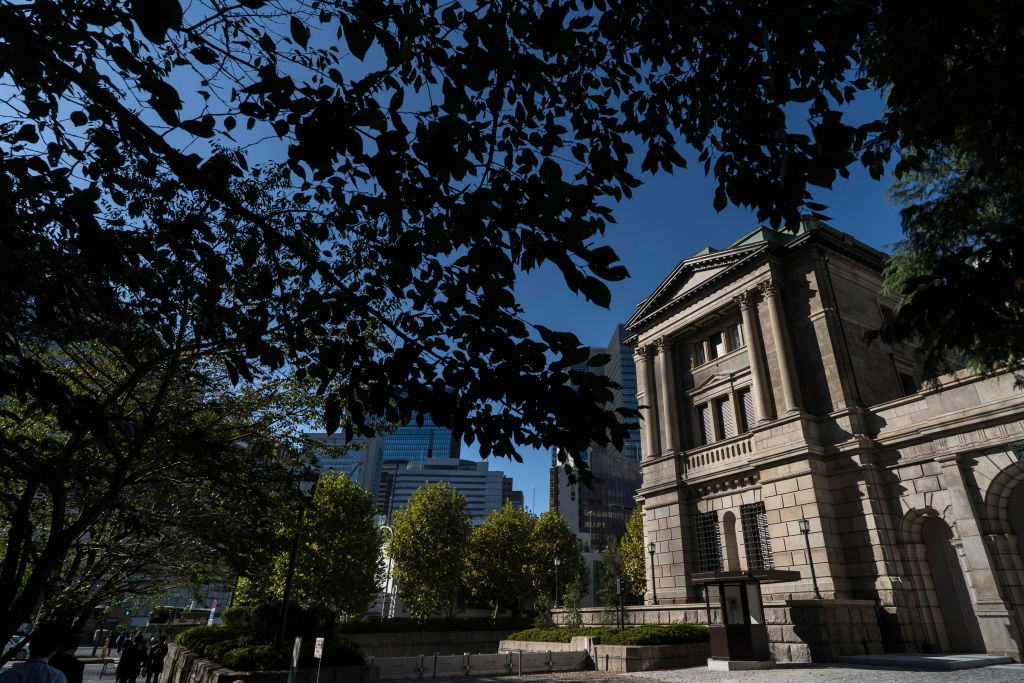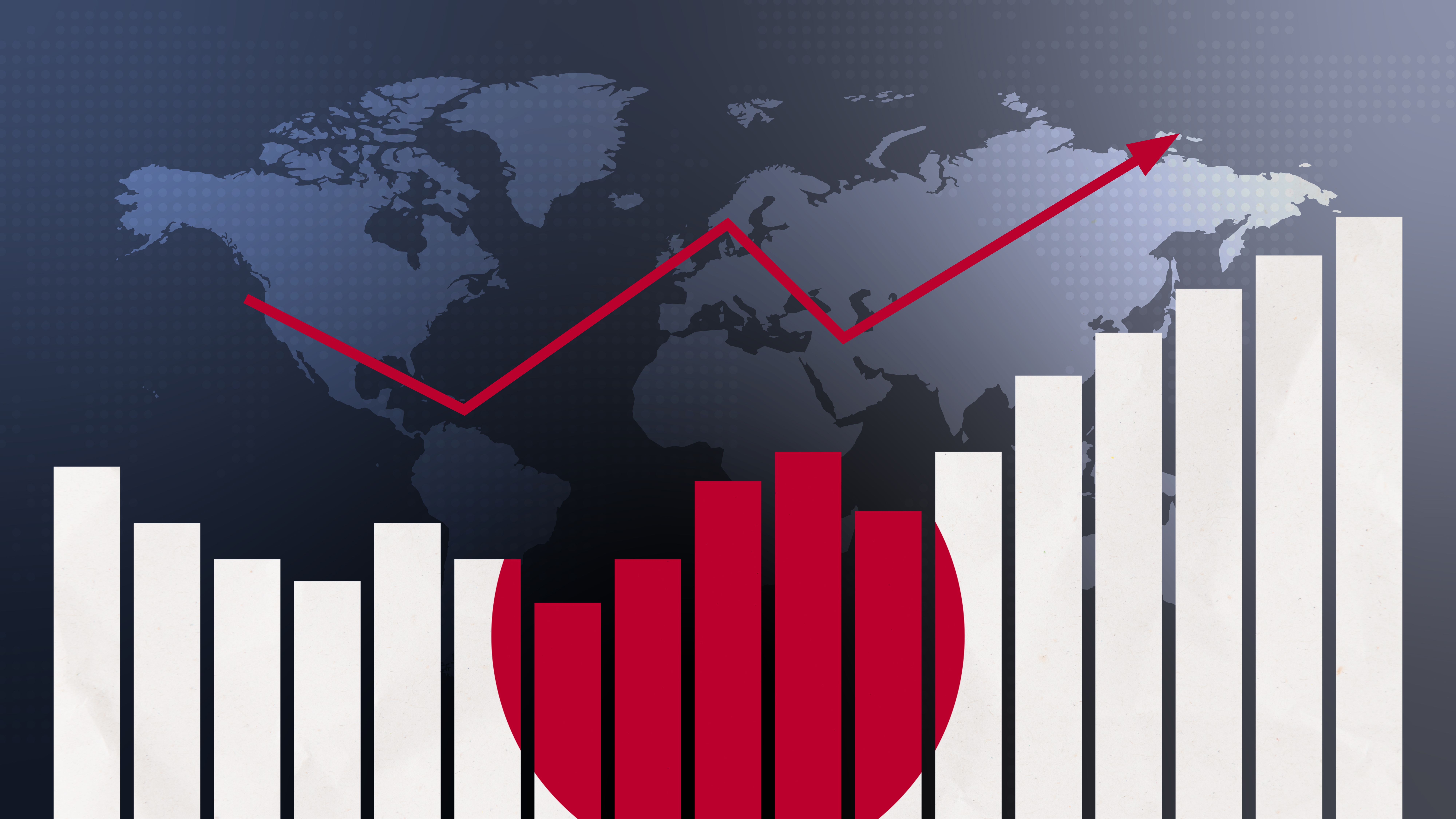
Senior Fellow Hideo Hayakawa, a former executive director of the BOJ, discusses the changing role of the central banks against the backdrop of the coronavirus crisis.
* * *
Central banks, institutions that manage the currency and monetary policy of a state or monetary union, have three basic roles to play in support of the economy: maintaining price stability, ensuring the stability of the financial system, and—more controversially—financing government debt. The COVID-19 crisis has drastically altered the relative prominence of these roles over the short term and could usher in a long-term change as well.
Central Banks to the Rescue
In the midst of the economic emergency precipitated by the COVID-19 pandemic, the stability of the financial system has emerged as the main preoccupation of the central banks. Their first response to the coronavirus market shock was to inject liquidity, most importantly via a coordinated action by leading central banks, led by the Federal Reserve, to boost dollar liquidity.[1] The purpose was to alleviate the severe dollar shortage facing businesses and developing countries that had amassed massive dollar-denominated debt under the ultra-loose monetary policies of recent years.
Next came purchases of commercial paper and corporate bonds to stabilize the corporate finance markets, which had come under severe stress. (The Bank of Japan stepped up its purchases; the Fed not only began buying corporate bonds but also extended the scope of its purchases to low-grade bonds.)
Having succeeded in stabilizing these markets, at least for the time being, the central banks have turned their attention to assisting with emergency funding for small businesses and other companies hit hard by the COVID-19 pandemic. Unlike the Great Recession of 2007–9, the current economic crisis was not triggered by a financial meltdown. However, restrictions on business operations, regional lockdowns, and other measures aimed at stemming the spread of the virus have brought business to a virtual halt in some industries, leading to a cash crunch that has placed many companies—including some that previously did a roaring business—in imminent danger of collapse.
To prevent a surge in bankruptcies and unemployment, governments and central banks have been working together to provide cash-flow support. Japan has instituted a program that combines loan guarantees from government-affiliated “credit guarantee corporations” and interest subsidies from local governments to support unsecured, zero-interest loans from private financial institutions.
As an incentive for lenders, the BOJ has adopted a negative-interest refinancing scheme that in effect provides a 0.1% subsidy for loans extended under the program.[2] In the United States, the Fed has established the Main Street Lending Program, under which it effectively purchases up to 95% of each eligible loan that commercial banks provide to small and medium-sized businesses (with the Treasury Department promising to cover the Fed’s losses). The European Central Bank is doing something comparable with its TLTRO (targeted long-term refinancing operation) loans. Each country or region has adopted its own approach, but the similarities are more significant than the differences.
From QE to Monetary Financing
Another key function the central banks are playing in the midst of the COVID-19 crisis is that of financing the national governments’ deficit spending. Of course, no central bank openly admits to monetary financing, but that, in effect, is what is happening.
In addition to the abovementioned support for small businesses, governments have been obliged to spend vast sums on unemployment compensation, cash subsidies to individuals or households, and other emergency outlays, resulting in an almost unprecedented explosion in deficit spending. In the updated World Economic Outlook issued in June, the International Monetary Fund estimates that the US fiscal deficit will soar from 6.3% to 23.8% of gross domestic product from 2019 to 2020, while the euro area’s deficit will rise from 0.8% (nearly a balanced budget) to 11.7%, and Japan’s will balloon from 3.3% to 14.7%.[3] New issues of Japanese Government Bonds (JGBs) in the current fiscal year are expected to reach ¥90 trillion, far surpassing the ¥52 trillion floated at the height of the Great Recession.
In response, the central banks are stepping up their purchase of government bonds to prop up the market. Early on in the crisis, both the BOJ and the Fed announced that they would put no limits on government bond purchases. A practice formerly tolerated in the name of “quantitative easing” has clearly entered the realm of de facto monetary financing.[4]
In the midst of all this, the longtime emphasis on price stability has virtually disappeared from view. In May 2020, the United States, the EU, and Japan all fell short of their 2% year-on-year inflation targets as gauged by their own preferred indices: the US Core Personal Consumption Expenditures Price Index (which excludes food and energy) increased by 1.0%, the euro area’s Harmonized Index of Consumer Prices rose just 0.1%, and Japan’s Core Consumer Price Index fell 0.2%. Yet none of the central banks took any action in response.
Of course, this is not unreasonable; a below-target inflation rate allows the central banks to continue their loose-money policies. Nor would they want to lower the target range, since that could signal reluctance to pursue further monetary easing. But the fact that these below-target rates of inflation prompted no immediate action from the central banks indicates a weakened commitment to such targets. The change is particularly conspicuous in the case of Japan. BOJ Governor Haruhiko Kuroda had vowed to achieve 2% inflation in two years and to step up monetary easing if progress toward that goal flagged. Yet the BOJ has refrained from further easing of late despite Kuroda’s admission that Japan’s drive toward the inflation target has lost its momentum.
Post-Corona Forecast
It must be understood, of course, that what we are witnessing now is an emergency response by the central banks. The real question is how they will adjust their priorities (vis-à-vis price stability and financial stability) after the coronavirus crisis has subsided.
It is possible, of course, that the central banks will simply return to their default mode of single-minded inflation targeting, as they did following the 2007-8 financial crisis. Indeed, it has been reported that some Fed officials advocate “overshooting”—that is, deliberately allowing prices to shoot past the target before starting interest rate hikes. This approach would only intensify the longstanding emphasis on inflation targeting as opposed to financial stability.
However, given recent history, it strikes me as overly optimistic to assume that a commitment to overshooting will boost inflation to the target rate of 2%.[5] After all, in the years since the 2007–8 financial crisis, the United States has frequently fallen short of that target even after achieving full employment and posting the longest period of economic expansion in history.
The Bank of Japan has failed miserably in spite of years of quantitative easing. The danger with such a fixation on inflation targets is that the central banks will continue their ultra-loose monetary policy even as the economy starts to overheat simply because inflation has not surpassed the 2% target, in the process fueling the buildup of financial imbalances and another asset bubble. Recalling that just two years ago Fed Chairman Jerome Powell expressed a desire to place greater emphasis on financial imbalances, I am hopeful that the Fed and other central banks will pursue a more realistic balance between price stability and financial stability going forward.
The Debt-Financing Trap
On the other hand, one would be hard-pressed to find a central bank official who is comfortable with the long-term use of the central bank to finance deficit spending. This is because none of them are believers in MMT, modern monetary theory, which holds that massive structural deficits are no problem, since one can always rein in inflation by tightening credit. Once the economic impact from the coronavirus has subsided, I have no doubt central bank officials in the West will begin making the case for fiscal soundness. The problem is that in today’s low-inflation, low-interest environment, governments have little incentive to cut spending or raise taxes.
Not long ago, with the federal deficit spiraling, there was considerable speculation that the Fed would follow BOJ’s example and embrace “yield curve control,” the practice of buying as many long-term government bonds as needed to keep long-term interest rates below a certain level. At this point, however, Fed officials seem wary of such a commitment. Their reluctance may stem from an institutional memory of the difficulty the Fed had extricating itself from a similar de facto monetary financing scheme, which was instituted during World War II and continued until the Treasury–Federal Reserve Accord of 1951. Moreover, long-term interest rates are much harder to control now than they were in those days, when the government directly regulated interest on things like savings deposits.
Japan, for its part, has repeatedly missed its own targets for achieving a primary balance, and the fiscal situation can only deteriorate further in the wake of the coronavirus crisis, given the double impact of the economic slowdown and two massive supplementary budgets. But neither the government nor the markets seem overly concerned about the threat of rising interest rates, thanks to the long-term interest-rate controls adopted by the BOJ four years back. Caught fast in the trap of monetary financing, Japan will have a harder time than most countries fighting its way back to fiscal sustainability.
[1] This was done by enlarging existing US dollar liquidity swap arrangements. The biggest recipient of dollar funding under these arrangements is the Bank of Japan, which uses it to assist Japanese megabanks that have extended huge dollar-denominated loans to developing countries without securing sufficient dollar funding in advance.
[2] Year-on-year growth in Japanese banks’ total outstanding loans rose from +2.2% in March 2020 to +6.5% in June, the greatest increase since 2000.
[3] As an indication of the scale of Japan’s public debt, the ratio of (gross) debt to nominal GDP is expected to reach 268.0% by the end of 2020, as, compared with 141.4% for the United States and 105.1% for the eurozone.
[4] At its April 2020 monetary policy meeting, the BOJ decided to scrap its upper limit of about ¥80 trillion on annual purchases of JGBs. That said, under the yield curve control instituted in September 2016, which pegs yields on 10-year JGBs at approximately 0%, the BOJ’s annual purchases have remained well below ¥80 trillion, and they have not risen sharply since the April announcement.
[5] There appears to be a growing chasm between the central bankers who continue to believe in their ability to control prices and macroeconomists who point to secular stagnation and emphasize the limits of monetary policy. Interestingly, Olivier Blanchard, who served as president of the American Economic Association in 2018, delivered a well-received lecture on the role of fiscal policy at the annual meeting of the AEA, but the reaction to the presentation the following year by the 2019 president Ben Bernanke defending modern monetary theory was decidedly less sanguine.








